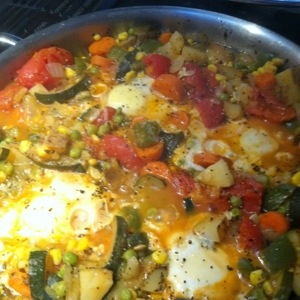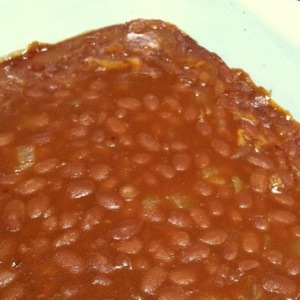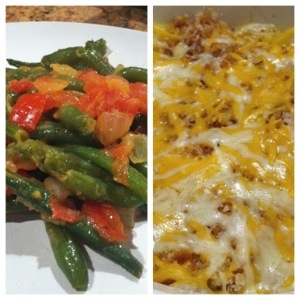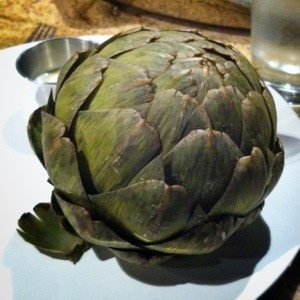Today I am going to post a lengthy transcript from a podcast by Fr. Evan Armatas of St Spyridon Greek Orthodox Church in Loveland, Colorado. This is an excerpt from his Introduction to Mark (starting around minute 26) that particularly struck me. I transcribed it myself and left out some of his side commentary that I felt detracted from the main point. Skipped portions are indicated by ellipses. Audience comments are indicated in parentheses. I have tried to preserve Fr. Evan’s speaking style and have made only minor changes for clarity.
You can listen to the whole lecture, as well as his study (so far) of the Gospel of Mark, at Ancient Faith Radio.
Is it fair to say that at the time that Matthew, Mark, Luke, and John were writing that there are others who are writing life stories of Jesus? Yes. Why didn’t we accept them? (They didn’t have the intimate knowledge that these four did.) Some would say that they didn’t have the intimate knowledge. (They weren’t in line with the oral tradition.) They weren’t in line with the oral tradition: very important. The oral tradition carries a huge amount of weight. It’s always standing there, and against it the Church is testing. Why else?
There’s lots of historical reasons why. I’ll give you some of them. Within those centers of Christianity in the early Church – Jerusalem, Antioch, Alexandria, Rome, eventually Constantinople – what books were being read? These four. The others weren’t. So in an outlying parish somewhere they might have been reading from other accounts, but when they really sat down they said, “you know, this hasn’t been the central message. In Jerusalem we haven’t been reading that book. And the community here in Jerusalem was pretty intimate with what happened.”
And then we have other champions, early writers like Clement, Irenaeus, Ignatius, and Polycarp. And who were they quoting? Who are they citing when they’re writing? … Matthew and Luke are being cited by ancient writers. They’re not citing, except maybe in derision or in confrontation, these others like the Gospel of Thomas. They’re citing those, but they’re citing them to refute them. So again, you have to understand who’s reading what. Well, the main churches are reading Matthew, Mark, Luke, and John. The main writers are citing these. The oral tradition is aware of what Matthew, Mark, Luke, and John are saying. In other words, what does Mark write from? The oral tradition. … Even the sociologists will tell you that oral history is powerful. It is fairly voracious. It is kept quite well.
Keep in mind that in every church you don’t have a Bible like you and I think we have. Rather what you probably have is fragments of books. You’ve got elements of the Prophets, elements of the Pentateuch, elements of the Psalms, elements of the Gospels. Remember when Paul writes and says, “read this letter that I sent you and then send it off to the Laodiceans, and then read the letter that I sent them” (ref. Col 4:16)? We don’t have that letter. … So they would have bits and pieces.
So the Church did what? Canonized it. It said here is the list of the 27. You get the festal encyclical of St Athanasius the Great that lists them. We’re talking in the 300s. These are the books. … So you’ve got all that time.
(Father, maybe now would be a good time to mention the so-called Lost Books of the Bible.)
Right, that’s what I’m saying. The Church is aware of those books. You know, when that whole thing came up recently with the Davinci Code, and everybody was freaking out, the Orthodox Church was yawning. What are you talking about? We already know about this book. We wrote all about it. We already dealt with it. Why is everybody so excited? I remember they interviewed an Orthodox monk about it and they were saying, “How come you don’t read from it? You should read from it.” And the monk said, “Well, you know about this book, but I don’t think it would be profitable to read from it.”
In other words, what we have tended to do in modern society is, against what Saint Paul says, say, “Oh, it’s all good. Try it all. There’s no filter. Let it all in. Let your kids watch PG13 movies, no problem. It’s not going to effect them.” And they Church says, “You’re kind of stupid, aren’t you?” Because you don’t want to watch PG13 movies with your kids. You don’t want them to read trashy novels. Because the formation of their souls, their minds, their hearts, their nous, will be malformed, and later on in life they’ll suffer because of it. Those of us who grew up with no filter already know this. And so the Church isn’t necessarily saying, “Don’t go read that. We’re not going to let you read that.” We just say, “Why would you read it? It’s not profitable. It’s not good for you. Now if you want to go read it, you’re going to go read it.” But we know of them, and we canonized only certain Gospels. (There are some really early stories about that. Writings where they said, “sure you can read that, but why would you want to?”) Exactly. We still say this. You can go read it, no one is going to stop you.
It’s like when you look at life and you say, “what’s the big deal about gambling?” Or, “why are you such a prude? Why wouldn’t you let your kids watch prime time tv? Let them wear a bikini.” Whatever it is. The Church in its worst case says to people, “No, you can’t do it.” That’s that rather restrictive church of the Middle Ages. The Orthodox Church didn’t take part in that. So we never had this idea that we should restrict peoples’ freedom. We’re about freedom.
I’m about to get scandalous. Some people say, “what about abortion, Father?” The Church is against abortion. We’re clear: we shouldn’t abort children. But the Church can’t force you. What are the two primary theological concepts that we talked about earlier? God’s love and man’s freedom. You can’t stop man’s freedom. If you try to, you end up with tyranny. And what do men do when they’re put under a tyrannical rule? They rebel. So they Church is clear on that. Same with your children. …
Rather what the Church has done has wooed humanity. Shown them. “Look at the nice playground we built. Look how clean and pretty it is. It’s got all the bells and whistles you’d ever want: it’s got joy, it’s got mercy, it’s got compassion.” We preach light, we don’t preach darkness. And therefore the Church has said, “you can read them, but we’re going to tell you where the light is. We know where the light is.”
That’s where the Church does its best work. There was a petition that was sent to all the clergy saying we should come out hard against gay marriage, we should come out hard against abortion. You know, during the political season. I said no, I’m not going to do it. And I was talking to one of my classmates and he said, “me either. I’m going to preach the light.” And that’s what the Church does at its best: we preach the light. When you preach the light people recognize it. … And we can preach the light when it comes to these alternative stories. We say, “you can read them, but we’re going to preach the light and we think you might be better off if you read those instead.” How does one learn to detect counterfeit money? You handle real money. …
The other thing that we have to say about these other books is what was the point of the Church back then, and what is the point today? Salvation. That’s it. Our job is to get you into the Kingdom. My job is to get in myself, and take as many of you as I can with me. That’s my job. We’re solely committed to preparing you for the event of your death so that you transition peacefully from this life into the next. So we don’t think in the Church like the world thinks. So in promoting a certain canon, the reason the monk said it wouldn’t be profitable is because the Church’s purpose is your salvation. We’re not playing games.


















